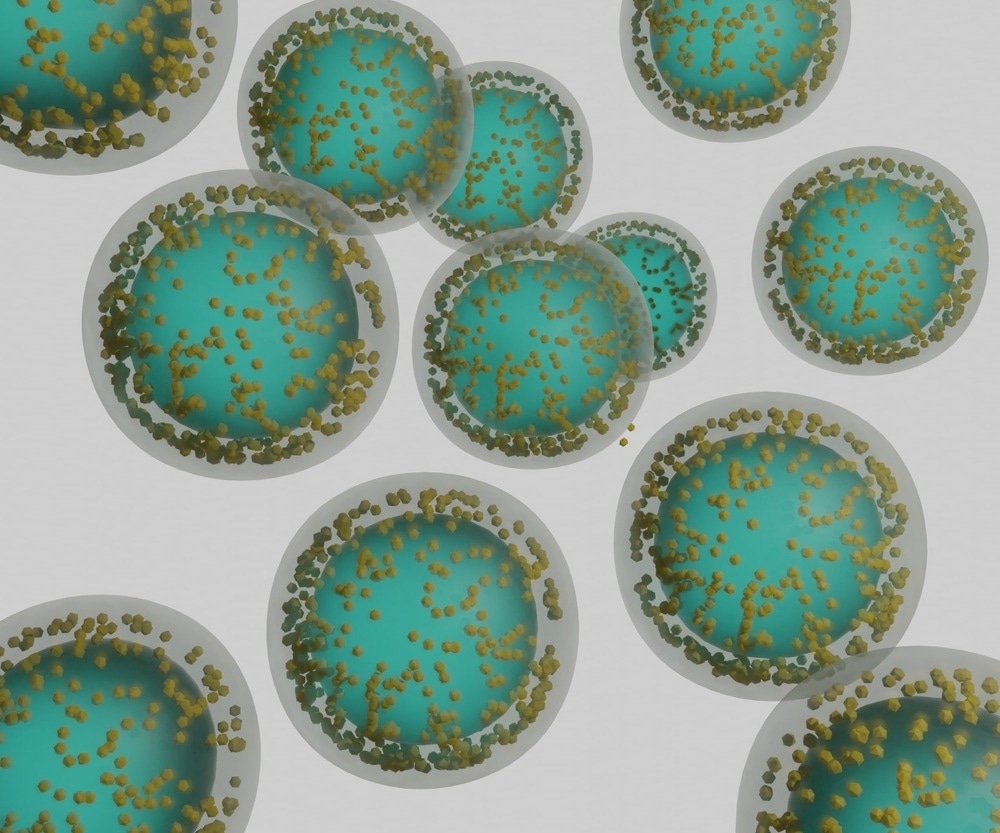Due to their distinct features, nanomaterials are explored as delivery systems for bioactive agents. In an article recently published in the journal Carbohydrate Polymers, researchers designed D-limonene- κ-carrageenan nanoparticles (DL-κC NPs) through a one-step process. These nanoparticles released the bioactive DL in a pH-dependent manner in vitro.

Study: Encapsulation of bioactives within electrosprayed κ-carrageenan nanoparticles. Image Credit: Love Employee/Shutterstock.com
Increasing the κC concentration promoted the photo/thermal stability of DL. In NPs with 0.5% κC, over 85% of original DL was preserved by exposing the NPs to ultraviolet (UV) light for 120 minutes. Through this work, the researchers demonstrated the efficiency of electrosprayed κC NPs in designing high-loaded, pH-sensitive NPs to encapsulate sensitive bioactive agents.
Biological Importance of DL and κC
DL is a monocyclic monoterpene, primarily found in citrus essential oil. Despite its benefits to human health, the biomedical application of DL was limited due to its hydrophobicity, oxidative susceptibility, high reactivity, and high volatility.
Encapsulating DL molecules can overcome these challenges. Due to their distinct features like higher surface-area-to-volume ratio, solubility, entrapment efficiency, and bioavailability, nanocarriers can be used for encapsulating potent drug molecules.
Electrospraying is a low-cost nanoencapsulation technique that enables the preparation of nanoparticles for drug or bioactive delivery. It involves the engineering of nanosized particles from polymeric suspensions, solutions or emulsions applied through conductive spinneret by applying high voltage.
κC is a water-soluble polysaccharide obtained from Rhodophyta (red seaweed). It is a nontoxic and biodegradable macroion with excellent solubility in aqueous solvents. Additionally, κC has biomedical applications with anti-tumor, anti-hyperlipidemic, anti-coagulant, antioxidant, immunomodulatory, and anti-viral properties, making it a potent carrier matrix for drugs or bioactive delivery.
κC-based structures are investigated for food and pharmaceutical applications, including drug delivery, food packaging, tissue engineering, and wound healing. Food-grade κC is nontoxic and stable in the gut.
Previous reports show that κC is noncytotoxic and exhibits high cell viability toward human adipose-derived stem cells without red blood cell (RBC) hemolytic activity in humans. These properties make κC electrosprayed nanoparticles (NPs) promising candidates for encapsulating bioactive molecules.
DL-κC NPs
In the present study, the researchers developed DL-loaded electrosprayed κC NPs, with superior entrapment capacity, high photo/thermal stability, and controlled release of the bioactive agent. A simple emulsion electrospraying technique was employed to synthesize biostable κC NPs to utilize them as vehicles for DL.
The researchers analyzed the viscosity and flow behavior of emulsions and observed that the emulsions with concentrations of 0.3% κC and 5 or 10% DL exhibited Newtonian flow behavior, and the flow behavior indexes were 0.992 (for 5% DL) and 0.951 (for 10% DL).
Inadequate covering of DL droplets by emulsifier and κC resulted in destabilization in the emulsion. Consequently, increasing the DL concentration from 5 to 10% in emulsion resulted in an increase in consistency index from 1.13 to 2.19 millipascal second.
The consistency index of the emulsions with 0.5% κC at 5 or 10% of DL was higher than those with 0.1% κC. Additionally, a sharp decrease in viscosity was found in emulsions with 0.1% κC on applying low shear rates of 10-second inverse. Furthermore, higher shear rates of up to 100-second inverse resulted in a long Newtonian plateau.
The flow behavior index of κC0.5-DL5 (0.5% κC, 5% DL) and κC0.5-DL10 (0.5% κC, 10% DL) were 0.942 and 0.903, respectively. The above findings revealed that the emulsion mixtures were stabilized by 0.5% κC, and the emulsion’s rheological characteristics were similar to that of Newtonian fluids.
Emulsions prepared with 0.7% κC showed a shear-thinning rheological behavior, where the viscosity of the emulsions depended on applied shear rates. The flow behavior index values dropped to 0.81 and 0.77 for κC0.7-DL5 (0.7% κC, 5% DL) and κC0.7-DL10 (0.7% κC, 10% DL), respectively.
SEM was employed to determine the size and morphology of the electrosprayed NPs. The molecular chain rigidity and lower molecular weight led to insufficient entanglement of molecular chains in emulsions with 0.3% (w/w) κC solution. Thus, κC0.3-DL5 or κC0.3-DL10 (0.3% κC, 5 or 10% DL) emulsion samples did not form a polymer jet for electrospraying the particles.
SEM images of κC0.5-DL5 NPs (0.5% κC, 5% DL) showed homogenous particle structure with spherical or icosahedral morphology and a diameter between 70 to 150 nanometers. These NPs showed uniform dispersion without aggregation.
The κC0.5-DL10 NPs (0.5% κC, 10% DL) showed larger particle sizes with diameters between 95 to 330 nanometers. The increase in DL concentration decreased the electrical conductivity (EC) and zeta potential of emulsion, leading to a low electric field for the jet flow into larger particles during electrospraying.
Conclusion
To summarize, the researchers prepared biopolymer-based delivery systems by electrospraying κC NPs as nanocarriers for DL. They demonstrated that the structural and physicochemical properties of the engineered NPs were affected by initial emulsions. A higher concentration of κC and lower fractions of DL improved the photo/thermostability of the NPs.
The entanglement in the polymer chain, the consequent viscosity, and the feed emulsion’s surface charge determined the morphology of DL-κC NPs. The proportion of DL/κC in the emulsions changes the release properties and stability of NPs.
Optimizing the concentrations of κC to DL could lead to the development of spherical capsules with homogenous distribution via an electrospraying approach. Furthermore, the release of bioactives from the spherical capsules is pH controlled.
Reference
Niloofar Fani, M.H. Enayati, Hadis Rostamabadi, Seid Reza Falsafi (2022). Encapsulation of bioactives within electrosprayed κ-carrageenan nanoparticles. Carbohydrate Polymers. https://www.sciencedirect.com/science/article/pii/S014486172200666X
Disclaimer: The views expressed here are those of the author expressed in their private capacity and do not necessarily represent the views of AZoM.com Limited T/A AZoNetwork the owner and operator of this website. This disclaimer forms part of the Terms and conditions of use of this website.